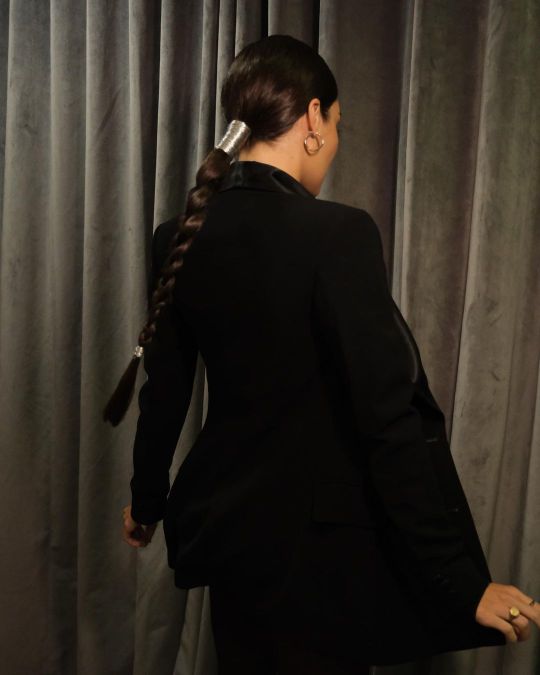#meriem debbagh
Explore tagged Tumblr posts
Photo





























#pelinkarahan#pelin karahan#handeercel#hande ercel#ozgecangurel#ozge cangurel#egekokenli#ege kokenli#merve oflaz#merveoflaz#meriemdebbagh#meriem debbagh
5 notes
·
View notes
Photo

New Post has been published on https://toldnews.com/world/africa/algiers-dispatch-algerias-turmoil-adds-new-obstacle-to-saving-the-historic-casbah/
Algiers Dispatch: Algeria’s Turmoil Adds New Obstacle to Saving the Historic Casbah

ALGIERS — Much of the capital is boiling over with stifled anger at 20 years of police-state repression. But the Casbah, in the heart of Algiers, is strangely quiet, the ancient stone alleys empty in the glare of the sun.
There is no need for demonstrations in the historic district to underscore the dead hand of the state. It is evident all around.
Ruins punctuate the beguiling maze of whitewashed buildings that cascade down the slope to the Mediterranean, where Renoir said he had “discovered whiteness,” and Guy de Maupassant found a “city of snow under dazzling light.”
Even before revolution convulsed Algeria this year, a new plan to save the Casbah from its creeping decline was in trouble, offending some for its invitation to the French, the former colonizers, for help in saving the Ottoman-era district.
With Algeria’s current political upheaval, and the uncertainty and further paralysis it is inflicting on the government, it will likely be even harder to realize that plan. In the meantime, the Casbah decays.
Every stage of urban ruin is visible in this neighborhood, packed with some 50,000, mostly poor residents yet nearly empty of the elements that have helped save historic districts in less closed-off countries — tourists, restaurants and museums.
Boulem Debbagh stood on a recent day in the ornate Ottoman doorway of a whitewashed house he said his family had occupied since the 1830s.
“They’ve done nothing since Boumediène,’’ he said, referring to the president who died in 1978. A donkey passed, collecting the garbage. The alleys are too narrow for any vehicle. ‘‘It’s been all just blah-blah-blah.”
During Algeria’s war of independence from France, which ended in 1962, the Casbah played a critical role as a place to organize and hide insurgents.
At independence, the poor fled for the more modern neighborhoods abandoned by the departing French.
The ultranationalist, modernizing Algerian government had little interest in the ancient neighborhood, founded in the 10th century.
“They’ve had no sense of culture or heritage,” said Ali Mebtouche, head of the Casbah Foundation, a nonprofit organization dedicated to saving the Casbah.
It did not help that Islamists infiltrated the Casbah during Algeria’s brutal civil war of the 1990s.
Today, nearly a third of the Casbah’s 18th- and early 19th-century buildings have fallen into ruin, “and the rest are crumbling,” said Mr. Mebtouche, who is a veteran of Algeria’s war of independence and was born there.
Underscoring the district’s fragility, a building in the lower Casbah collapsed this week after heavy rains, killing five members of the same family who were squatting in it.
International efforts to save the neighborhood have been limited, for fear of further offending the prickly Algerians. Intensely nationalistic, the government for decades has been reticent about seeking outside help of any sort.
Last year Unesco held an international conference to discuss ways of helping the area. But the German architect Armin Durr, who had worked in the district years before, told a stunned audience, “With great regret I must say, goodbye or farewell to the Casbah!”
He added, “I don’t think this umpteenth effort will succeed.”
Unesco has declined to put the Casbah on its list of endangered sites when “objectively, it’s in danger,” said Karim Ben Meriem, an architect with the Institute for Development and Urbanism of the Paris Region, an agency of experts on urban planning that consults with local governments all over France, and sometimes outside it, on urban planning issues.
The institute was at the center of the squabble that erupted late last year, when the prefect in Algiers said he wanted to enlist the expertise of the agency and a famous French architect, Jean Nouvel, winner of architecture’s top prize, the Pritzker, to revitalize the area.
Dozens of historians, architects, writers, activists and students on both sides of the Mediterranean and Atlantic reacted with fury to the proposed plan in an open letter to the newspaper L’Humanité last December.
The letter raised the specter of “French colonialism” and invited Mr. Nouvel, designer of the Guthrie Theater in Minneapolis and the Quai Branly primary arts museum in Paris, to withdraw.
“Don’t accept complicity in a fourth wave of brutal French transformations of the Casbah,” they wrote, referring to the real degradation the district suffered during 132 years of French rule.
Mr. Nouvel did not withdraw. His role remains vague, conceived as it was with the Algerian authorities’ customary opacity. “What we’re expecting from him is not very well-defined,” Mr. Ben Meriem said.
Mr. Nouvel declined an interview request, his assistant saying it was “too soon.”
But in a written response to his accusers, Mr. Nouvel promised to “formulate a contribution that would develop and evolve on the scale of the terrain.”
The plan is to begin by reinvesting in the dead spaces, putting in temporary structures like children’s play spaces or artists workshops, in a concept known as “transitory architecture,” so that the inhabitants “reclaim their heritage,” Mr. Ben Meriem said.
“You can’t address the principal question unless the owners take an interest in their buildings,” he said. “The point is to recreate value.”
On the ground the reaction to Mr. Nouvel was less than welcoming, however.
“We don’t even know who this guy is,’’ said Farid Alouii, a resident trying to renovate a building stripped to its bare bricks. ‘‘They didn’t say anything to us, the people.”
Mr. Mebtouche, the head of the foundation dedicated to saving the Casbah, tacitly agreed.
“You can’t restore the Casbah without the children of the Casbah,” he said. “Why would they decide our fate without consulting us?’
The Casbah’s fragility is in plain sight. Steel girders span some of the narrow alleys, propping up the buildings on either side.
There has not been a single property transaction in the Casbah in 40 years, said Mr. Ben Meriem, the head of the Paris institute. “No buyers, no sellers — for 30 percent of the buildings, we don’t even know who the owners are.”
Among the disused buildings, said Mr. Mebtouche, “eighty percent are owners who have abandoned their properties,” unable to pay for renovations.
Squatters move in; their laundry flutters from the rooftops, from every one of which there is a view of the sea. There are buildings whose facades or backs have fallen out, exposing ruinous brick insides and distinctive, colonnaded courtyards.
Then, there are big piles of rubble where buildings once stood, and vacant lots where weeds have overgrown the rubble.
But it is also a neighborhood where children play at checkers in the intricately carved doorways, mothers in headscarfs climb the steep alleys after fetching their daughters from school, and enough of the whitewashed urban fabric survives to give a tangible sense of the past.
“Here, your neighbors feel at home with you, and you feel at home with them,” said Jamila Hamouda, whose husband, Mohamed, 73, was born in the 18th Century Ottoman dar, or townhouse, where brilliant blue-white tiles run up the stairs.
He was a teenager when French paratroopers blew up the Algerian revolutionaries’ legendary bomb-maker, Ali la Pointe, during the Battle of Algiers in 1958.
“It shocked us, what we lived through,” he said.
#africa news france 24#africa news health#africa news link#africa news madagascar#africa news natural disaster#africa news weather
0 notes
Text
Algeria’s Turmoil Adds New Obstacle to Saving the Historic Casbah
ALGIERS — Much of the capital is boiling over with stifled anger at 20 years of police-state repression. But the Casbah, in the heart of Algiers, is strangely quiet, the ancient stone alleys empty in the glare of the sun.
There is no need for demonstrations in the historic district to underscore the dead hand of the state. It is evident all around.
Ruins punctuate the beguiling maze of whitewashed buildings that cascade down the slope to the Mediterranean, where Renoir said he had “discovered whiteness,” and Guy de Maupassant found a “city of snow under dazzling light.”
Even before revolution convulsed Algeria this year, a new plan to save the Casbah from its creeping decline was in trouble, offending some for its invitation to the French, the former colonizers, for help in saving the Ottoman-era district.
With Algeria’s current political upheaval, and the uncertainty and further paralysis it is inflicting on the government, it will probably be even harder to realize that plan. In the meantime, the Casbah decays.
Every stage of urban ruin is visible in this neighborhood, packed with some 50,000, mostly poor residents yet nearly empty of the elements that have helped save historic districts in less closed-off countries — tourists, restaurants and museums.
Boulem Debbagh stood on a recent day in the ornate Ottoman doorway of a whitewashed house he said his family had occupied since the 1830s.
“They’ve done nothing since Boumediène,’’ he said, referring to the president who died in 1978. A donkey passed, collecting the garbage. The alleys are too narrow for any vehicle. ‘‘It’s been all just blah-blah-blah.”
During Algeria’s war of independence from France, which ended in 1962, the Casbah played a critical role as a place to organize and hide insurgents.
At independence, the poor fled for the more modern neighborhoods abandoned by the departing French.
The ultranationalist, modernizing Algerian government had little interest in the neighborhood, founded in the 10th century.
“They’ve had no sense of culture or heritage,” said Ali Mebtouche, head of the Casbah Foundation, a nonprofit organization dedicated to saving the Casbah.
It did not help that Islamists infiltrated the Casbah during Algeria’s brutal civil war of the 1990s.
Today, nearly a third of the Casbah’s 18th- and early 19th-century buildings have fallen into ruin, “and the rest are crumbling,” said Mr. Mebtouche, who is a veteran of Algeria’s war of independence and was born there.
Underscoring the district’s fragility, a building in the lower Casbah collapsed last month after heavy rains, killing five members of a family who were squatting in it.
International efforts to save the neighborhood have been limited, for fear of further offending the prickly Algerians. Intensely nationalistic, the government for decades has been reticent about seeking outside help of any sort.
Last year Unesco held an international conference to discuss ways of helping the area. But the German architect Armin Durr, who had worked in the district years before, told a stunned audience, “With great regret I must say, goodbye or farewell to the Casbah!”
He added, “I don’t think this umpteenth effort will succeed.”
Unesco has declined to put the Casbah on its list of endangered sites when “objectively, it’s in danger,” said Karim Ben Meriem, an architect with the Institute for Development and Urbanism of the Paris Region, an agency of experts on urban planning that consults with local governments all over France, and sometimes outside it, on urban planning issues.
The institute was at the center of the squabble that erupted late last year, when the prefect in Algiers said he wanted to enlist the expertise of the agency and a famous French architect, Jean Nouvel, winner of architecture’s top prize, the Pritzker, to revitalize the area.
Dozens of historians, architects, writers, activists and students on both sides of the Mediterranean and Atlantic reacted with fury to the proposed plan in an open letter to the newspaper L’Humanité last December.
The letter raised the specter of “French colonialism” and invited Mr. Nouvel, designer of the Guthrie Theater in Minneapolis and the Quai Branly primary arts museum in Paris, to withdraw.
“Don’t accept complicity in a fourth wave of brutal French transformations of the Casbah,” they wrote, referring to the real degradation the district suffered during 132 years of French rule.
Mr. Nouvel did not withdraw. His role remains vague, conceived as it was with the Algerian authorities’ customary opacity. “What we’re expecting from him is not very well-defined,” Mr. Ben Meriem said.
Mr. Nouvel declined an interview request, his assistant saying it was “too soon.”
But in a written response to his accusers, Mr. Nouvel promised to “formulate a contribution that would develop and evolve on the scale of the terrain.”
The plan is to begin by reinvesting in the dead spaces, putting in temporary structures like children’s play spaces or artists workshops, in a concept known as “transitory architecture,” so that the inhabitants “reclaim their heritage,” Mr. Ben Meriem said.
“You can’t address the principal question unless the owners take an interest in their buildings,” he said. “The point is to recreate value.”
On the ground the reaction to Mr. Nouvel was less than welcoming, however.
“We don’t even know who this guy is,’’ said Farid Alouii, a resident trying to renovate a building stripped to its bare bricks. ‘‘They didn’t say anything to us, the people.”
Mr. Mebtouche, the head of the foundation dedicated to saving the Casbah, tacitly agreed.
“You can’t restore the Casbah without the children of the Casbah,” he said. “Why would they decide our fate without consulting us?’
The Casbah’s fragility is in plain sight. Steel girders span some of the narrow alleys, propping up the buildings on either side.
There has not been a single property transaction in the Casbah in 40 years, said Mr. Ben Meriem, the head of the Paris institute. “No buyers, no sellers — for 30 percent of the buildings, we don’t even know who the owners are.”
Among the disused buildings, said Mr. Mebtouche, “eighty percent are owners who have abandoned their properties,” unable to pay for renovations.
Squatters move in; their laundry flutters from the rooftops, from every one of which there is a view of the sea. There are buildings whose facades or backs have fallen out, exposing ruinous brick insides and distinctive, colonnaded courtyards.
Then, there are big piles of rubble where buildings once stood, and vacant lots where weeds have overgrown the rubble.
But it is also a neighborhood where children play at checkers in the intricately carved doorways, mothers in head scarves climb the steep alleys after fetching their daughters from school, and enough of the whitewashed urban fabric survives to give a tangible sense of the past.
“Here, your neighbors feel at home with you, and you feel at home with them,” said Jamila Hamouda, whose husband, Mohamed, 73, was born in the 18th-century Ottoman dar, or townhouse, where brilliant blue-white tiles run up the stairs.
He was a teenager when French paratroopers blew up the Algerian revolutionaries’ legendary bomb-maker, Ali la Pointe, during the Battle of Algiers in 1958.
“It shocked us, what we lived through,” he said.
Sahred From Source link Travel
from WordPress http://bit.ly/2Y7UBcI via IFTTT
0 notes